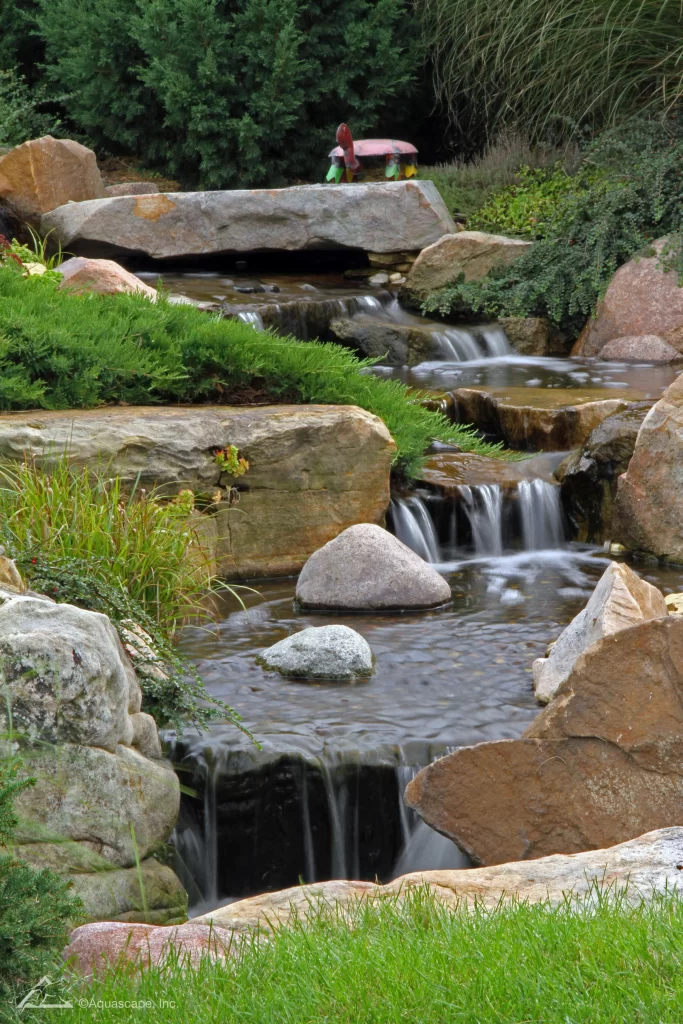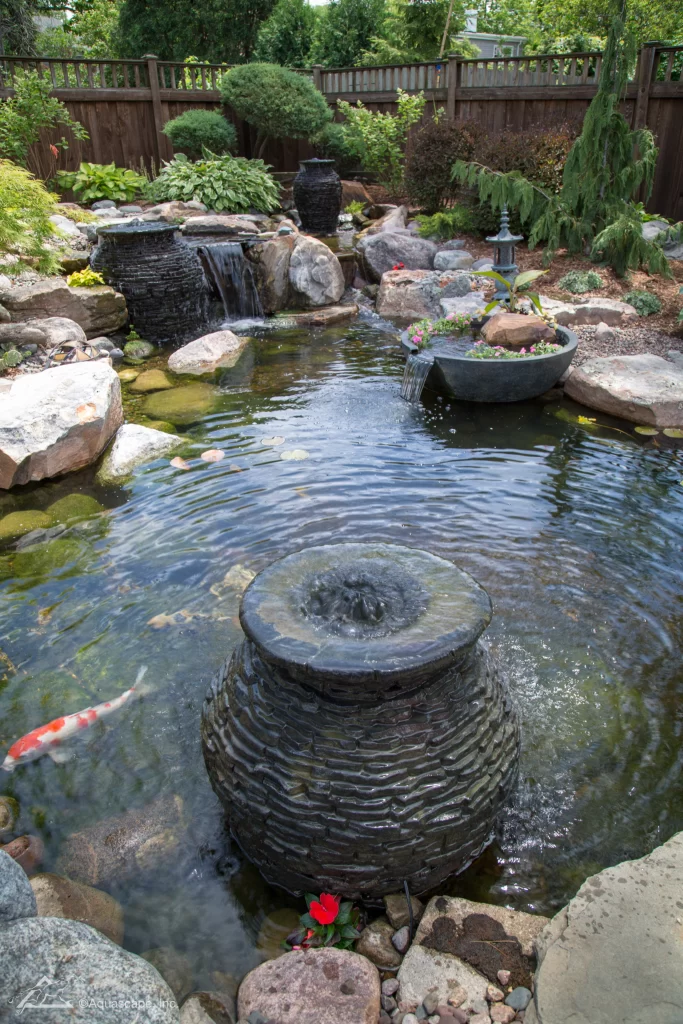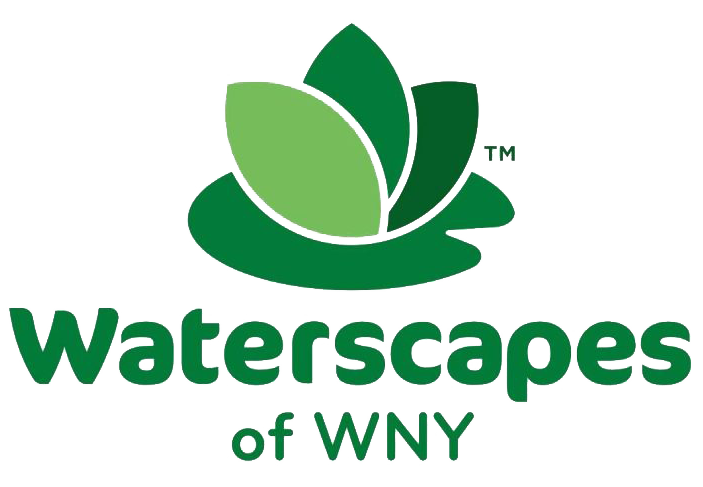

1. Maintain a healthy fish population
If you have more than 10” of fish for every 100 gallons of water, your pond is likely over-populated. Excessive fish waste can cause an imbalance in pond water. Consider finding some of them a new home. Many pond retailers and contractors will accept your fish.
2. Don’t over-feed your fish
When you feed fish more than they can eat, the uneaten food is left to decay in the pond. Be careful not to feed your fish more than once per day, and no more than they can eat in 2 to 3 minutes. Choose a quality fish food – preferably one that floats as opposed to sinking to the bottom of the pond if left uneaten.
3. Create a proper balance of plants
At season’s peak, you should have 40% to 60% of the surface area of your pond either covered or shaded by plants. Too many plants can cause oxygen deficiencies at night due to the photosynthetic process, when the plants take in oxygen and give off carbon dioxide. Your fish need the oxygen to survive (see tip #7).
4. Choose the right size pump for your pond
You should be circulating the entire pond’s water volume a minimum of once every hour. Make sure your pump’s flow isn’t restricted by debris in the skimmer or biological filter, and be careful not to pump water higher than it was intended. Every pump has its flow limitations.
5. Clean debris from pond before it has a chance to decay
Your pond skimmer will remove most of the debris from the surface of your pond, but you can also use a pond net to skim leaves and small sticks before they have a chance to descend to the pond’s bottom where they’ll decay. Decaying debris, combined with fish waste and leftover fish food, can cause ammonia levels to spike in your pond.
6. Choose proper filtration for your pond
Just like your pond pump, your pond’s filter should match the size of your water garden. Most pond filters are based on ideal circumstances, and if you exceed those, your filter becomes less effective. Always up-size your filter so that it can handle more than the capacity of your pond and remember to clean your filter according to instructions.
There are two types of filters in an ecosystem pond. A mechanical filter, also known as the skimmer, removes surface debris from your pond water such as leaves and small sticks. The biological filter, or BioFalls filter, is positioned to create the beginning of the waterfall in your pond. This filter uses bacteria to break down pond wastes, converting them into less harmful compounds that can be absorbed as fertilizer by your aquatic plants.
7. Keep your pond cool during the dog days of summer
When pond water exceeds 75º Fahrenheit, it has a difficult time retaining acceptable levels of dissolved oxygen, which is critical for the health of your fish. This is why it’s important to have the surface of your pond shaded by aquatic plants (see tip #3) – to help keep pond water cool. Fish need oxygen to survive. If you see them at the pond’s surface gasping for air, add an aerator to help them during times of extreme heat.

Leave a Reply